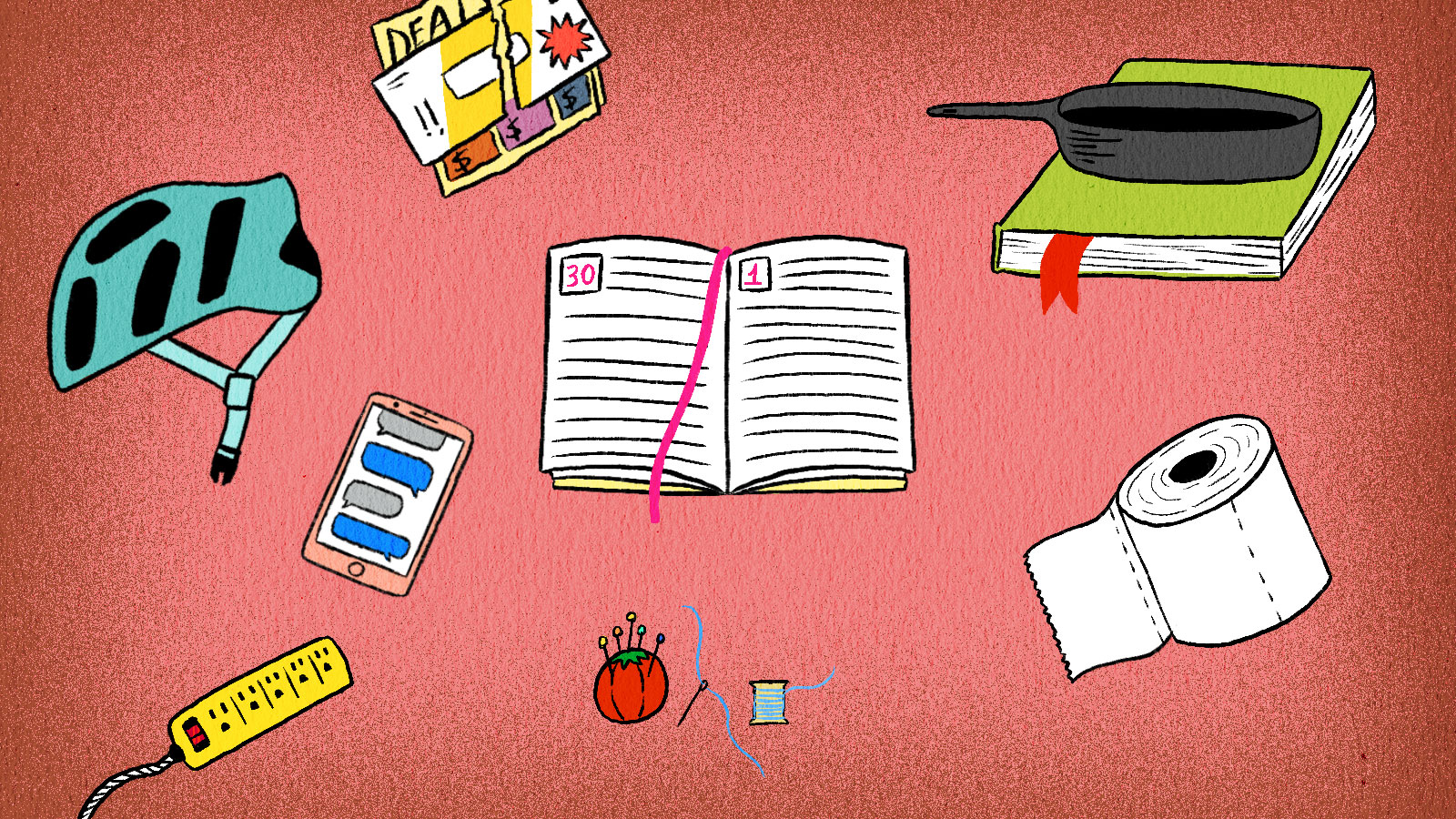In these times of unprecedented uncertainty, my to-do list helps me stay sane.
It doesn’t matter that I have no places to go or people to see. With COVID-19 tossing normal life down the drain the world over, the shred of normalcy helps me stave off apathy, paralysis, and my sudden aversion to wearing proper pants.
I’m not the only one desperate for a little structure in my life in the age of social distancing and sheltering in place. Many of us who are fortunate enough to stay home during this crisis have been busy establishing work-life boundaries, maintaining an exercise routine, and staying in touch with loved ones. While these are all great ways to break up the monotony of sheltering in place, it’s also possible to pencil climate action into your newfound daily routine.
To get started, Grist put together a to-do list of daily climate-related activities that are compatible with social distancing for two weeks straight.
Day 1: Stock up — thoughtfully. Before you speed out to the store and panic-buy everything in sight, stop and take inventory. Check out everything you already own, notice what should be consumed soon, and write down what you really need. Bulk beans, lentils, and grains are solid options: They’ll stay good for ages, are healthy and versatile, and are climate-friendly foods. And having a consolidated, well-planned list and an organized fridge will prevent food waste — a major contributor to climate change — and save you unnecessary trips to the store. You can even take a first step towards growing some of your own food by buying an herb to grow on your windowsill — mint, sage, oregano, parsley, and rosemary are all pretty hard to kill. (Before you finalize your shopping list, check out the action items for Days 2, 5, and 10.)
Day 2: Power strips to the rescue. Now that you’re working from home (alongside a partner, perhaps, or kids home from school), consolidate your outlets and save electricity by plugging your chargers into power strips that can be switched off when you don’t need them. Ditto if you have a toaster, coffee machine, and electric kettle all plugged in on the kitchen counter. If you don’t own power strips, add them to your list for Day 1 — lots of essential stores sell them. It’s easy to forget about all the appliances we leave plugged in to suck up power like vampires, but now that you aren’t rushing off to work, it’s easy to stop wasting power.
Day 3: Junk mail begone! By your third day indoors, it’s probably become apparent just how much junk mail piles up when left to its own devices. Why companies still send snail mail advertisements addressed to “Current Resident” is beyond me, but asking to be taken off their lists will save paper, energy, and your time. The website Catalog Choice makes it easy to get off the mailing lists of businesses that just won’t leave you alone. Now’s also a good time to switch all your monthly bills and medical statements to online only if you haven’t already.
Day 4: Hit the road. With your bike, that is. Most shelter-in-place orders still allow you to leave the house for exercise, and exploring local biking routes might inspire you to discover new commute options to take post COVID-19. With fewer cars on the road in most places, biking in an urban area might also be safer than normal, and the air quality better. If you can’t bike safely in your area, call your local elected officials to ask for better bike lanes.
Day 5: Expand your cooking repertoire. Have you always been too intimidated to ask what seitan is or to try one of those weird bean dessert recipes? Perhaps someone has always told you that tofu tastes good if it’s cooked right, but you have no clue what that even means? (Hint: It might look like this.) It can be intimidating to change up your diet, and unfortunately, the typical American diet isn’t very climate friendly. Now is the perfect time to get bold in the kitchen and explore one or two new plant-based recipes.
Day 6: Talk to your loved ones about climate change. If this sounds uncomfortable, unpleasant, or downright scary, you aren’t alone. But this can actually make a huge difference. A national survey on climate change found that although most Americans support climate action, not as many people believe that others support climate action. Expert climate communicator Katherine Hayhoe says that talking about climate change from a place of shared interests, like your faith or favorite sports, actually helps more than discussing science. (She also suggests skipping the conversation with your hardcore denier uncle and focusing on the vast majority of people who are open to new information.)
Day 7: Kick back with some climate-inspired pastimes. Halfway there! Take a lazy day, and mix some climate-related entertainment into your Hulu binge. Climate concerns have permeated pop culture, and some of the content out there is even … uplifting? Take TV shows like The Good Place, movies like Frozen II, novels like New York 2140, and board games like Energetic. Let no one say it’s impossible to think about climate change and have fun at the same time.
Day 8: Revise your utility bill. Depending on where you live, your local utility could offer the option to buy your power from renewable energy sources or switch to a time-of-use plan. The latter can help you save money and balance out the grid: It works by charging you more for electricity you use during the times of day when there’s the most demand, like dinnertime, but charging you less at times when people aren’t using as much, like the morning.
Day 9: Spring-clean your apartment. Or your garage. Or your house. Take stock of your clothes, knick-knacks, old electronics shoved into the back of the closet and separate the useful stuff from the junk. Put the stuff you don’t want in a box for now, but take some time to research ways to sell, donate, or recycle them once the COVID-19 crisis subsides — that way they won’t end up in a landfill.
Day 10: If it’s broke, fix it. Now that you’ve identified what you want to keep, make sure your stuff gets a long, full life by repairing it. Does your favorite sweater have a hole in the sleeve? Sew it up. Did you break the handle off your coffee mug? Reattach it with superglue or Sugru. The longer you can make your belongings last, the less often you’ll have to buy new ones, and the lower your carbon footprint will be.
Day 11: Become a citizen scientist. Is spring in the air earlier than it used to be? That’s valuable information for scientists tracking climate change. You can help them out by registering observations from your own neighborhood with Nature’s Notebook, which allows everyday citizens to contribute data to dozens of research projects. If you have younger ones around, try browsing the options on Project Noah, a citizen science platform with kid-friendly projects. Options include spotting and identifying urban wildlife (even squirrels!) and monitoring plants in your own backyard or local park.
Day 12: Submit a public comment to the EPA. The month-long comment period for the Trump EPA’s proposed “secret science” rule began on March 18 in the thick of coronavirus chaos. You can leave a comment for the government until April 17 expressing your thoughts on the reinterpretation, which the agency claims improves transparency but environmental advocates say would force EPA scientists to ignore oodles of crucial health and environmental data. And you can encourage others to do the same by sharing the link on social media or in a good old-fashioned email.
Day 13: Audit your bank. Your choice of bank can have a major climate impact — especially if that bank uses your money to fund major fossil fuel projects. Financial institutions are realizing that it’s pretty bad PR to destroy the climate, and the modest improvements they’ve already pledged could accelerate if customers are clearly willing to ditch the worst offenders. For more on figuring out what your bank is up to and changing your account effectively, check out Umbra’s guide to switching banks.
Day 14: Get outdoors. You’ve earned a reminder of the world you’re fighting to protect. Appreciating the natural world while the air is cleaner and the streets are quieter can inspire you to work towards a future that looks more like that — except with people who are healthy and employed instead of virus-ridden and scared. You can visit a national park for free, discover a new urban garden, or just appreciate the birdsong outside your window. Make sure you stay six feet away from other people, keep up your hand-washing, and don’t crowd popular parks or beaches.




